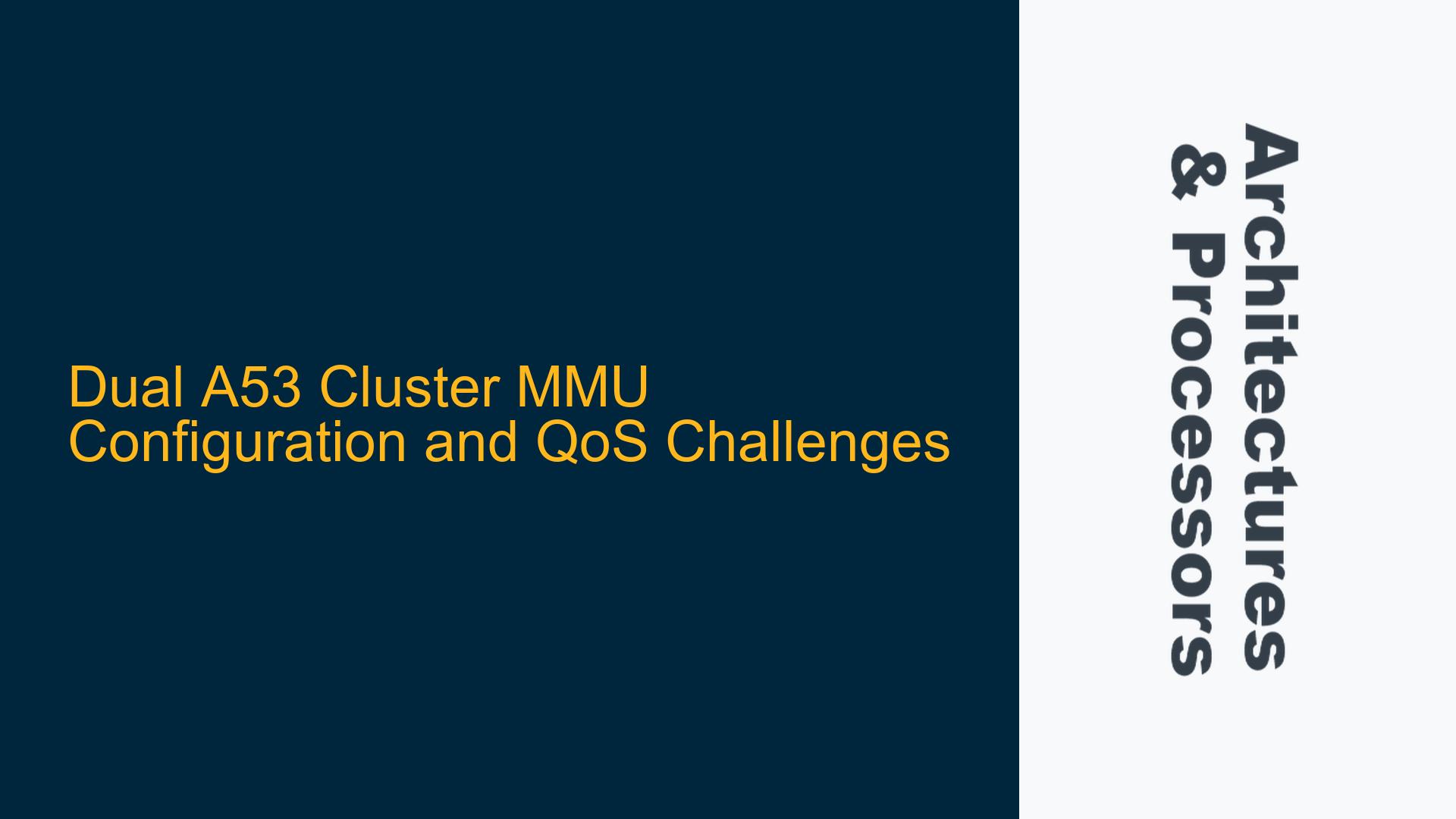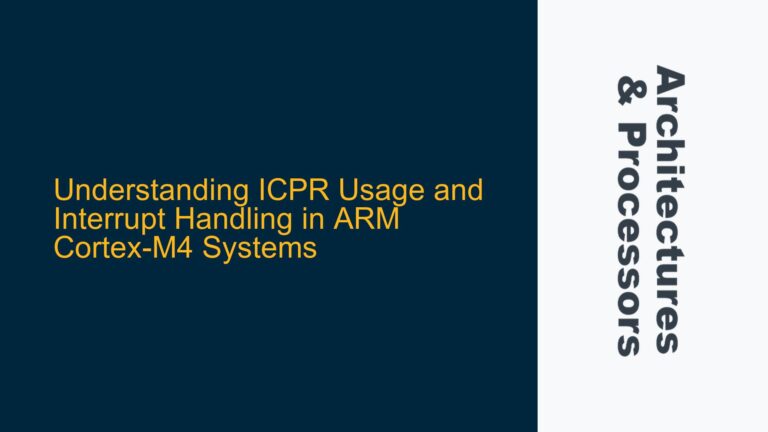Core 1 MMU Configuration by Core 0 in a Dual A53 Cluster
The ARM Cortex-A53 processor is a widely used 64-bit core in embedded systems, known for its power efficiency and performance. In a dual-core A53 cluster, each core operates independently, but they share resources such as the L2 cache and the AXI master interface. One of the key challenges in such a setup is ensuring proper Memory Management Unit (MMU) configuration and maintaining isolation between the cores, especially when one core runs a non-secure application.
The MMU is responsible for translating virtual addresses to physical addresses and enforcing memory protection. In a dual-core A53 cluster, each core has its own MMU, and the configuration of these MMUs is critical for system stability and security. The core issue here is whether Core 0 can configure the MMU of Core 1, and if so, how to ensure that Core 1 cannot modify its MMU configuration after the initial setup.
The MMU configuration involves setting up translation tables in memory and configuring system registers. While Core 0 can set up the translation tables in memory that Core 1 will use, it cannot directly configure Core 1’s system registers. This is because system registers are core-specific and can only be accessed by the core that owns them. Therefore, Core 1 must initialize its own system registers, but Core 0 can prepare the necessary data structures in memory.
To achieve isolation between Core 0 and Core 1, especially when Core 1 runs a non-secure application, additional mechanisms such as TrustZone and virtualization can be employed. TrustZone provides hardware-enforced isolation between secure and non-secure states, while virtualization allows for the creation of virtual machines that can run under the control of a hypervisor. These mechanisms can be used to ensure that Core 1 cannot modify its MMU configuration after it has been set up by Core 0.
Hypervisor-Based MMU Configuration and Bandwidth Throttling
One proposed solution is to use a hypervisor on Core 1 to manage the MMU configuration and control the non-secure application. The hypervisor can enforce restrictions on Core 1’s access to system resources, including the MMU. This approach allows Core 0 to set up the initial MMU configuration for Core 1, while the hypervisor ensures that Core 1 cannot modify this configuration.
However, this solution introduces another challenge: ensuring that the non-secure application running on Core 1 does not negatively impact the performance of Core 0. Since both cores share the L2 cache and the AXI master interface, a malicious or poorly behaving application on Core 1 could generate excessive memory accesses, leading to contention and reduced performance for Core 0.
To address this, Quality of Service (QoS) features can be employed to regulate the bandwidth usage of each core. QoS mechanisms can be used to allocate a specific percentage of the available bandwidth to each core, ensuring that Core 0 receives the majority of the bandwidth while Core 1 is limited to a smaller portion. For example, Core 1 could be restricted to using no more than 20% of the AXI master interface bandwidth, while Core 0 is guaranteed 80%.
Modern ARM processors, including the Cortex-A53, support various QoS features that can be configured to achieve this level of control. These features include memory system-level QoS, which allows for the prioritization of memory accesses from different cores, and MPAM (Memory Partitioning and Monitoring), which provides more granular control over memory bandwidth allocation.
Implementing QoS and Ensuring System Stability
To implement QoS in a dual-core A53 cluster, the following steps can be taken:
-
Configure the MMU for Core 1: Core 0 sets up the translation tables in memory that Core 1 will use. Core 1 then initializes its own system registers using these tables. The hypervisor on Core 1 ensures that Core 1 cannot modify its MMU configuration after initialization.
-
Enable QoS Features: Configure the memory system-level QoS features to allocate bandwidth between Core 0 and Core 1. This can be done by setting up priority levels for memory accesses from each core and configuring the AXI master interface to enforce these priorities.
-
Monitor and Throttle Bandwidth Usage: Implement monitoring mechanisms to track the bandwidth usage of each core. If Core 1 exceeds its allocated bandwidth, apply throttling to reduce its access to the AXI master interface. This can be done using hardware-based throttling mechanisms or software-based controls.
-
Use MPAM for Advanced Control: If the system supports MPAM, configure it to partition memory bandwidth between the cores. MPAM allows for more precise control over memory access patterns and can be used to enforce strict bandwidth limits on Core 1.
-
Test and Validate: After configuring the MMU and QoS features, thoroughly test the system to ensure that Core 0’s performance is not impacted by Core 1’s activities. This includes stress testing Core 1 with high memory access loads to verify that the QoS mechanisms are effective.
By following these steps, it is possible to configure the MMU for Core 1 in a dual-core A53 cluster while ensuring that Core 1 cannot modify its configuration after initialization. Additionally, QoS features can be used to regulate bandwidth usage, ensuring that Core 0’s performance is not negatively impacted by Core 1’s activities. This approach provides a robust solution for maintaining system stability and security in a dual-core A53 cluster.
Conclusion
In a dual-core ARM Cortex-A53 cluster, configuring the MMU for Core 1 while ensuring that Core 1 cannot modify its configuration after initialization is a complex task that requires careful consideration of both hardware and software mechanisms. By using a hypervisor to manage Core 1’s MMU configuration and implementing QoS features to regulate bandwidth usage, it is possible to achieve the desired level of isolation and performance control. This approach ensures that Core 0’s performance is not impacted by Core 1’s activities, providing a stable and secure environment for both cores.






